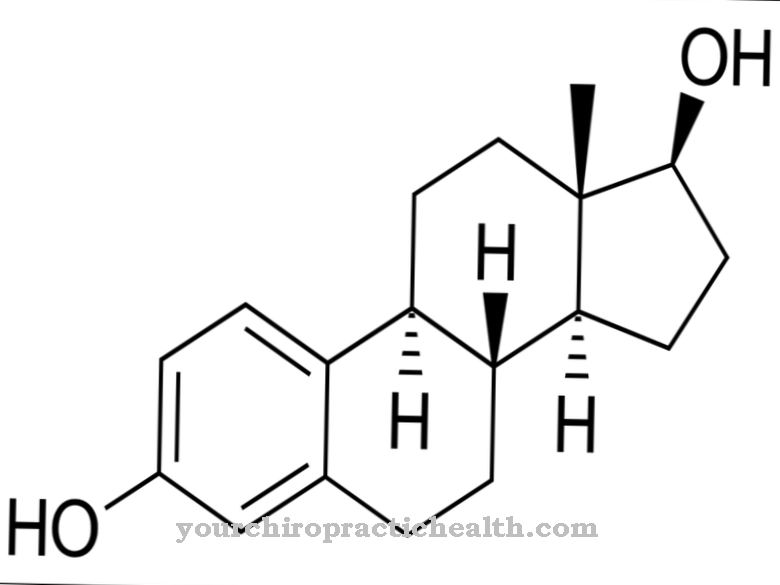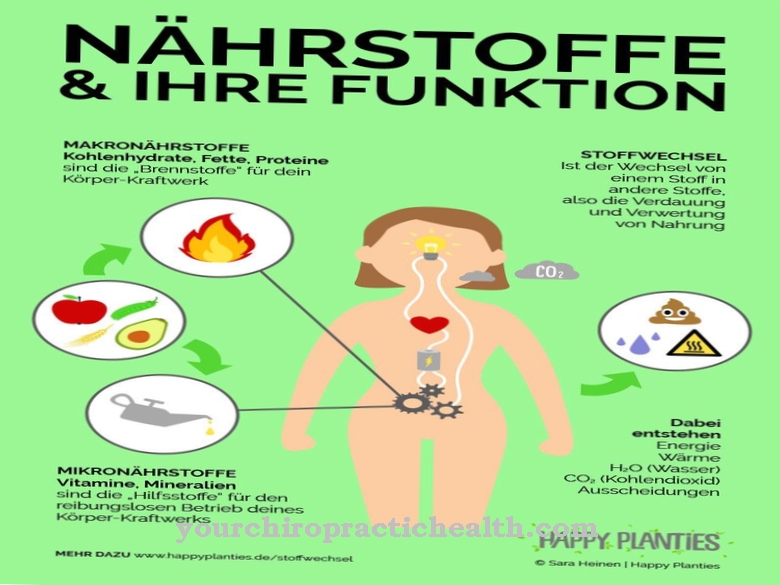Stress hormones can be roughly divided into the two groups of glucocorticoids and catecholamines. The most important representatives are the hormones adrenaline and cortisol, which are produced in the adrenal cortex. Stress hormones are supposed to ensure survival by providing an excess of energy.
What are stress hormones?
In stressful situations, the body releases stress hormones. Such stressful situations include heavy physical work, competitive sports or psychological stress such as fear of loss, failure or fear of death. Serious illnesses can also promote the release of stress hormones. In addition to catecholamines such as adrenaline and noradrenaline, stress hormones also include glucocorticoids such as cortisol.
All stress hormones have an effect on the metabolism and are primarily intended to provide energy that supports the organism in coping with a stressful situation. The catecholamines are the better known group of stress hormones. The fact that glucocorticoids are less well known is probably due to their delayed action. Unlike catecholamines, they develop their effects by regulating gene expression instead of via G-protein-coupled receptors. The two main stress hormones from the two groups are adrenaline and cortisol.
Anatomy & structure
Adrenaline is chemically expressed as (R) -1- (3,4-dihydroxyphenyl) -2- (N-methylamino) ethanol and is therefore one of the catecholamines. The effective variant of adrenaline corresponds to a stereochemical (R) configuration. The biosynthesis takes place via the α-amino acids L-phenylalanine and L-tyrosine. There is a hydroxylation by L-DOPA and a decarboxylation to dopamine.
This is followed by an enantioselective hydroxylation to noradrenaline. Norepinephrine is released from the adrenal medulla and appears as a transmitter in the sympathetic system. Only the N-methylation of the noradrenaline produced in this way delivers the actual adrenaline. Cortisol, on the other hand, is made from cholesterol. In the adrenal cortex, pregnenolone is synthesized via six-electron oxidation. Afterwards a cholesterol translocase takes place. The pregnenolone then leaves the mitochondrion of the adrenal cortex and transforms to progesterone through 3β-hydroxysteroid dehydrogenase and isomerase.
The progesterone is transformed into 17α-hydroxyprogesterone by the enzyme 17-steroid hydroxylase. Another hydroxylation takes place, which gives 11-deoxycortisol. The steroid 11beta-hydroxylase converts this substance to cortisol.
Function & tasks
Stress hormones are supposed to ensure survival in stressful situations by providing energy. In the distant past, survival in a stressful situation was mainly ensured through fight and flight, whereby an excess of energy was required for both survival strategies. The hypothalamus is the supreme authority in the release of stress hormones. This is where the precursors of the stress hormones - the substances CRH and ACT - are formed.
These substances stimulate the synthesis and secretion of hormones from the adrenal cortex by stimulating the hormone-producing cells. In the case of sudden and short-term stress, adrenaline is of great importance in connection with survival, because the effectiveness of catecholamines is significantly more sudden than that of glucocorticoids. Adrenaline binds to receptors and does not work at the gene expression level. The hormone has various effects on the nervous system, the cardiovascular system, the muscles and the gastrointestinal tract.
For example, adrenaline increases blood pressure, increases heart rate and inhibits digestion. The hormone develops its effect by binding to adrenergic receptors. In addition, adrenaline enables a quick supply of energy by breaking down fat. The circulation-regulating effects lead to a decentralization of the circulation. In this way, vital organs can still be supplied with blood in the event of an accident, even after major blood loss.
Apart from that, adrenaline has a pain-relieving effect and enables you to go beyond your own limits. In long-term stress, on the other hand, the body releases glucocorticoids such as cortisol. The release of these stress hormones is slower, so that they would have no effect in the event of sudden stress. Cortisol activates degrading metabolic processes and in this way provides the body with high-energy compounds.
You can find your medication here
➔ Medicines against depressive moods & to lighten the moodDiseases
The most well-known diseases related to the stress hormones are Cushing's disease and Addison's disease. In Cushing's disease, there is an overfunction of the cortisol stimulation by the precursor ACTH. This leads to hypercortisolism. This hypercotisolism usually results from a tumor of the pituitary gland. The ACTH-producing cells are overstimulated by the tumor in the pituitary gland.
Reduced muscle mass and weight gain determined the clinical picture. Raised blood pressure, increased bone fragility and severe thirst can also set in. Cushing's syndrome is to be distinguished from this disease. The symptoms mentioned can also arise in the context of this disease. A Cushing's syndrome does not have to correspond to a tumor on the pituitary gland. In the context of the syndrome, the adrenal cortex produces too much cortisol much more autonomously, without being stimulated. The syndrome is caused by external factors, such as the use of glucocorticoids.
In contrast to Cushing's disease or Cushing's syndrome, Addison's disease is an underactive adrenal cortex. This disease comes in an autoimmunological form. This means that antibodies are formed against the hormone-producing cells of the adrenal cortex and ultimately cause these cells to be destroyed. Addison's disease can also occur in the context of other diseases, for example in the context of storage diseases, as part of syndromes such as the Waterhouse-Friedrich syndrome or as a functional impairment due to tumor metastases.



























